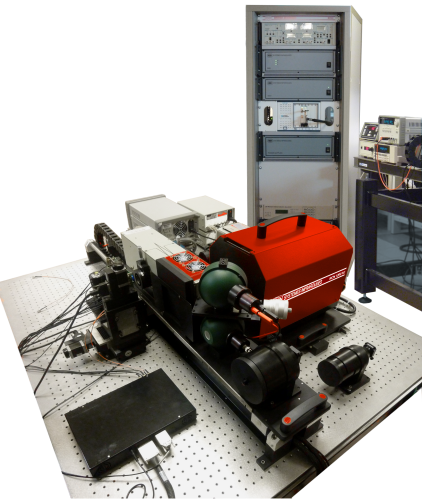BIRD 210
Universal Electro-Optic Test Bench For CMOS Detectors
Test any type of detectors with the BIRD Test bench
Testing detectors requires the implementation of ultra-low noise driving electronics and presenting high quality optical stimuli to the detector under test. The BIRD 210 meets all these requirements and allows to test any type of detector by easily implementing the detector’s driving signals and providing exhaustive and accurate measurement results.





Electro-optical Test Bench Key Features
The BIRD 210 bench consists of an electronic cabinet equipped with a set of ultra-low noise electronics including a clock signal generator, a bias voltage unit and a high frequency analogue to digital converter. An optical bench illuminates the detector under test with accurate and calibrated optical signals: a low temperature uniform and highly stabilised IR reference source for noise measurements, NUC and bad pixel tests, an adjustable IR source with high spectral resolution for spectral response measurements and an aberration-free pinhole or thin slit source for MTF and crosstalk tests

A wide range of tests run on the BIRD electro-optical Test Bench
- Noise tests: fixed pattern noise, temporal noise, NETD, responsivity, detectivity, 3D-noise, 2D-detectivity,
- Dynamic range, linearity,
- Non-uniformity correction,
- Bad pixel localisation,
- Spectral response,
- Crosstalk, MTF
BIRD: Electro-optical Test Bench Main benefits:
- User–friendly interface for clock signal design, pixel remapping, bias voltage settings and A/D parameter definition and application of these parameters and signals to the detector
- Setting of parameters for testing functions such as temperatures for noise measurement and NUC, criteria for bad pixel localisation (up to 6 criteria), spectral range for spectral response analysis, etc.
- Automatic control of the optical bench’s opto-mechanical elements (translation stages, blackbodies, monochromator) depending on the selected functions and the corresponding settings
- Acquisition and processing of the detector’s video signal, including the exclusive noise and responsivity optimisation as a function of the bias voltage values,
- Display and recording of the complete tests results.
